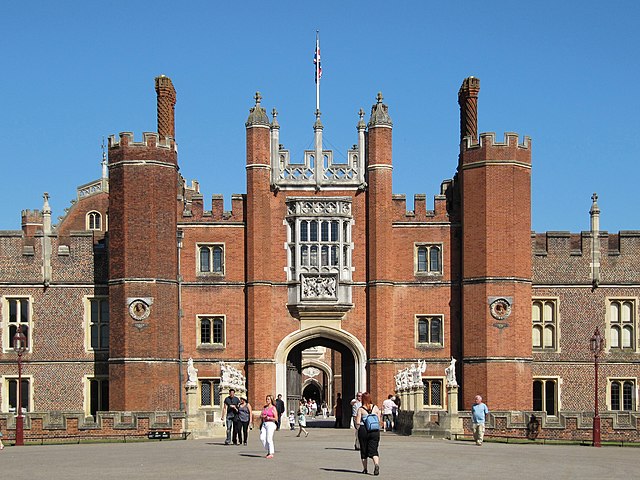Hampton Court Palace: Difference between revisions - Wikipedia
 Article Images
Article Images
Content deleted Content added
Line 90: On 2 September 1952, the palace was given statutory protection by being [[listed building|grade I listed]].<ref>{{IoE|205384}} Retrieved 27 March 2009.</ref> Other buildings and structures within the grounds are separately grade I listed, including the early 16th-century tilt yard tower{{spaced ndash}} the only surviving example of the five original towers;<ref>{{IoE|205392}} Retrieved 27 March 2009.</ref> [[Christopher Wren]]'s Lion gate built for [[Anne of Great Britain|Queen Anne]] and [[George I of Great Britain|George I]];<ref>{{IoE|205395}} Retrieved 27 March 2009.</ref> and the Tudor and 17th-century perimeter walls.<ref>{{IoE|205385}} Retrieved 27 March 2009.</ref>
The [[Royal School of Needlework]] moved to premises within the Palace from Princes Gate in Kensington 1987, and the Palace also houses the headquarters of [[Historic Royal Palaces]]. From 27 to 28 October 2005 an informal [[European Council]] meeting took place at the palace.{{citation needed span|date=June 2012|}} ===Film location=== | |||